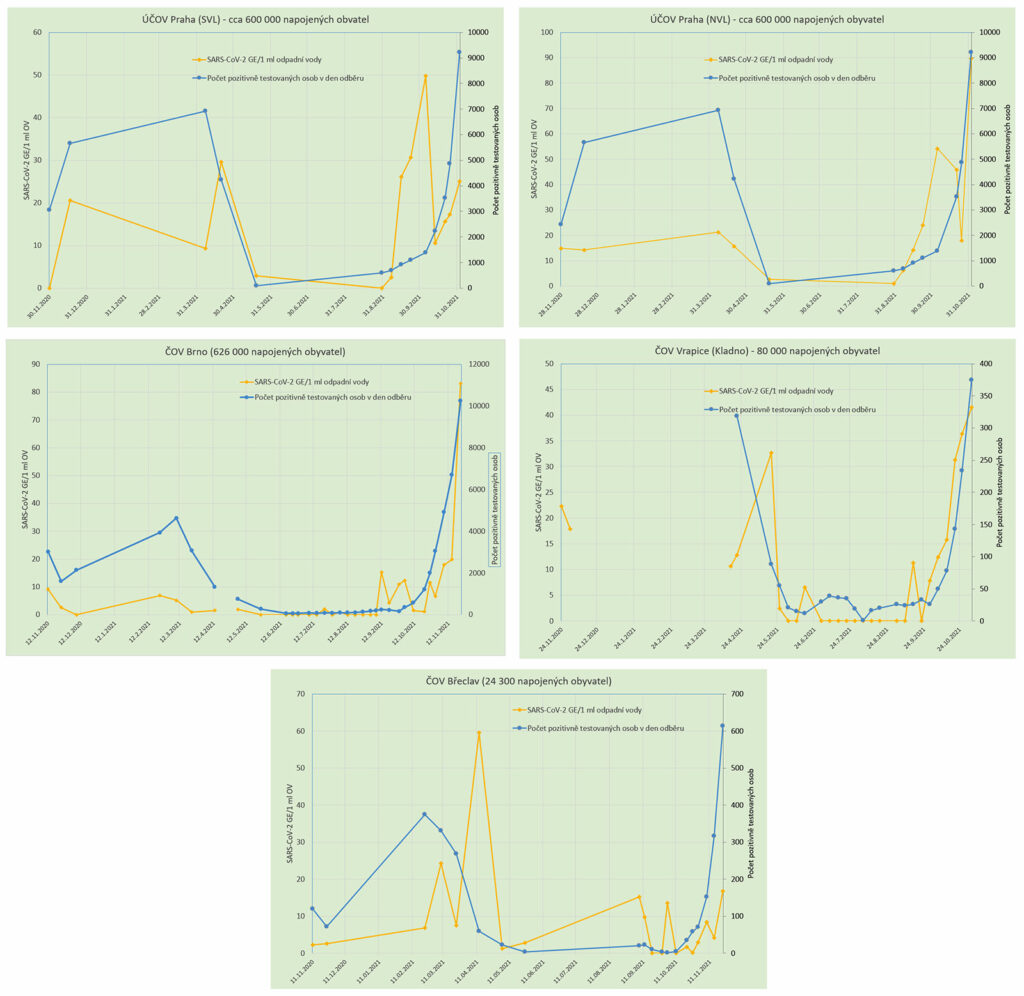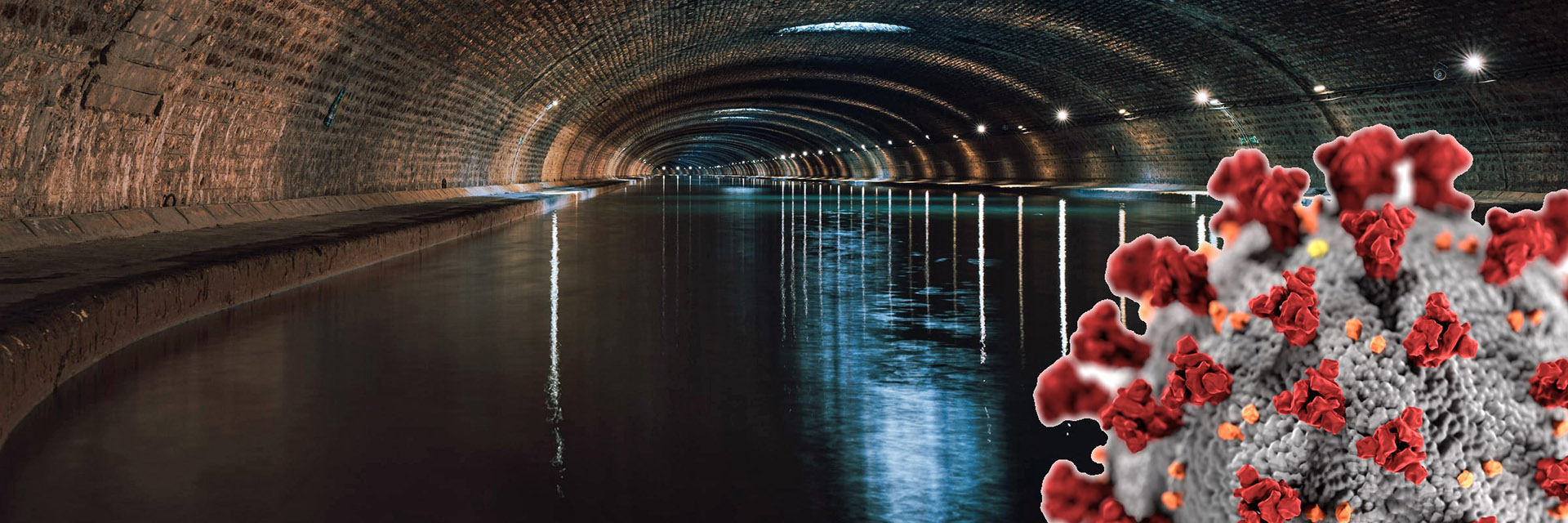SARS-CoV-2 in wastewater
T. G. Masaryk Water Research Institute together with the Research Institute of Veterinary Medicine in Brno, and with epidemiologists from the 1st Faculty of Medicine, Charles University, introduced a wastewater monitoring system in order to monitor the epidemic situation of the Covid-19 disease and predict its development.
The principle of the system is the collection of untreated wastewater at selected wastewater treatment plants (WWTPs) suitable for the purpose, isolation of viral RNA, and quantitative detection of the number of the SARS-CoV-2 virus genomic units. Viral RNA is secreted into the wastewater by SARS-CoV-2 infected persons and therefore its amount correlates with their numbers in the areas connected to the monitored WWTPs. The results of the analyses show the good usability of the chosen method and thus the possibility of obtaining valuable objective epidemiological information at a disproportionately lower cost than with the help of clinical trials.
The research team is currently performing continuous monitoring at four WWTPs in the Czech Republic and is analysing and evaluating the results of analyses of more than 550 samples taken at 66 WWTPs throughout the Czech Republic during all waves of the epidemic, and it is ready to offer cooperation to the healthcare sector for successful implementation of the European Commission recommendation on the introduction of systematic monitoring of SARS-CoV-2 in wastewater dated 17 March 2021. T.G. Masaryk Water Research Institute, p.r.i. ensures, independently or in cooperation with WWTP operators, wastewater sampling and, together with the Research Institute of Veterinary Medicine, p.r.i. in Brno, performs isolation and quantitative detection of SARS-CoV-2 RNA from wastewater in three laboratories.

Current results confirm that the system is able to detect the onset of a new wave of the epidemic before it is proven by clinical trials. Values from large treatment plants correlate very well, for example from both lines to the Prague WWTP, showing a rapid increase between weeks 35 and 41, and the Brno WWTP. At the Brno WWTP, there are currently higher values of viral RNA in wastewater than during the peak epidemic in spring and autumn, which may mean, for example, higher numbers of asymptomatic individuals secreting viruses into wastewater or higher viral load in current virus variants.
An article on the server Seznam Zprávy by Hana Zvěřinová Mlejnková (in Czcech) also discusses the topic.


